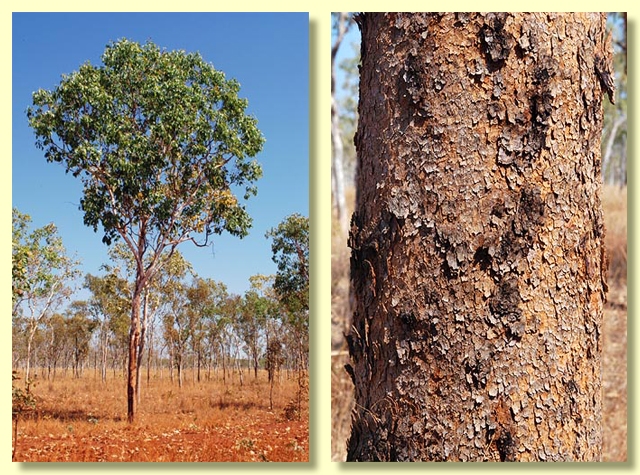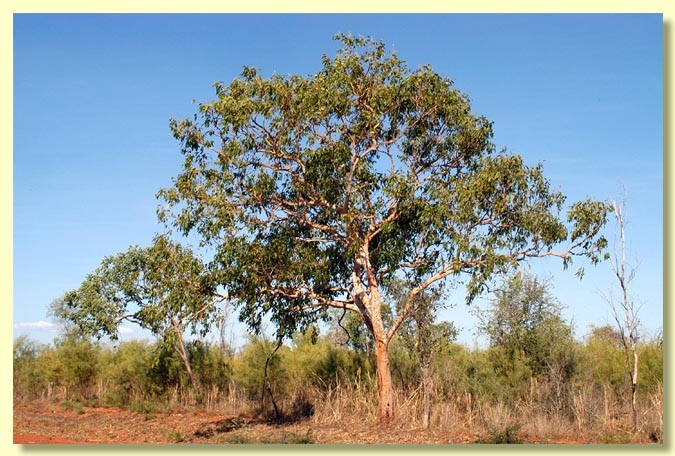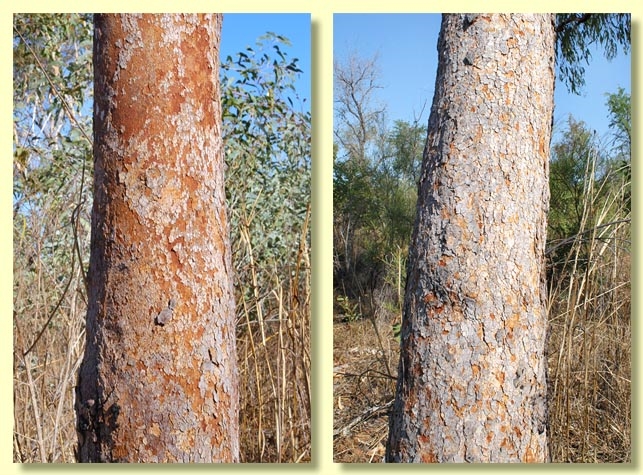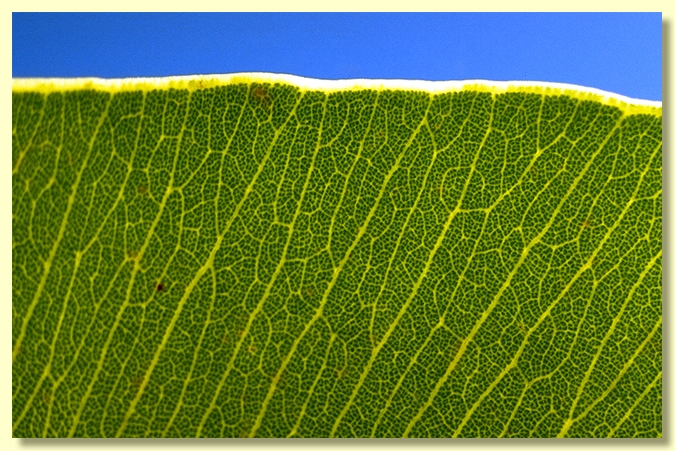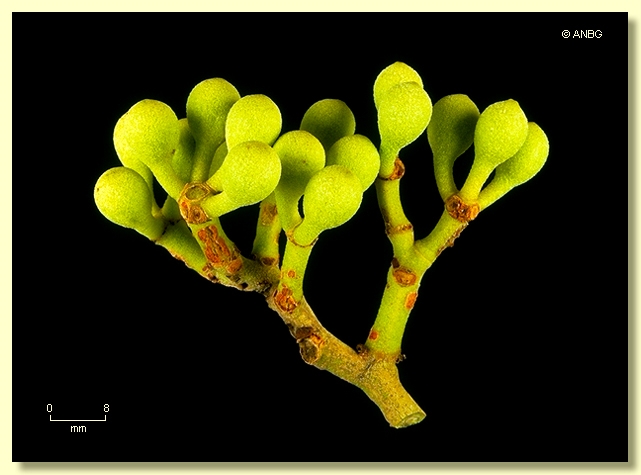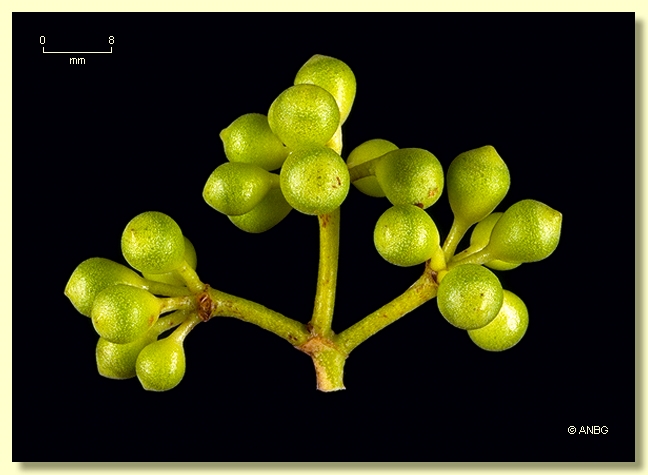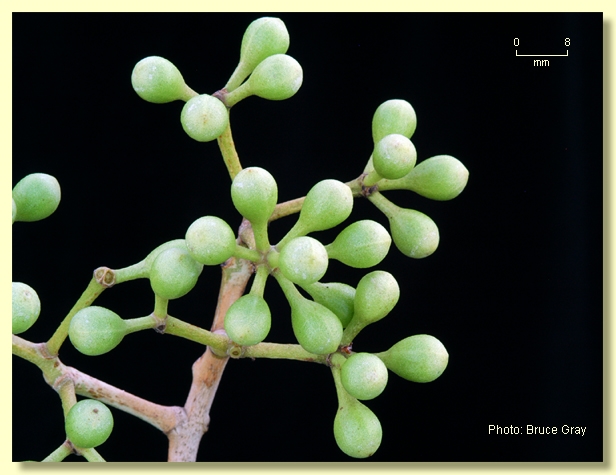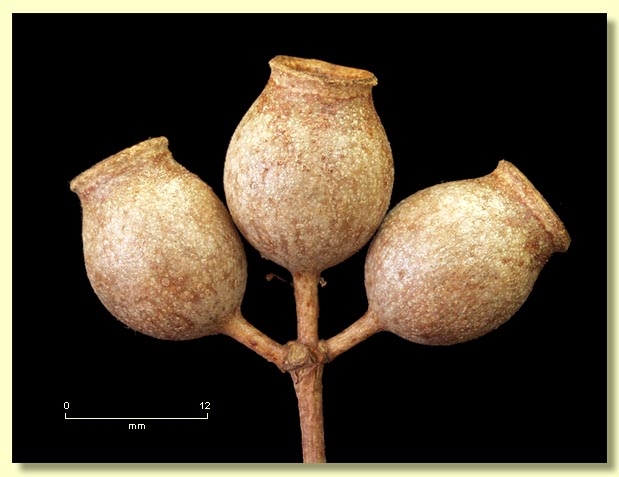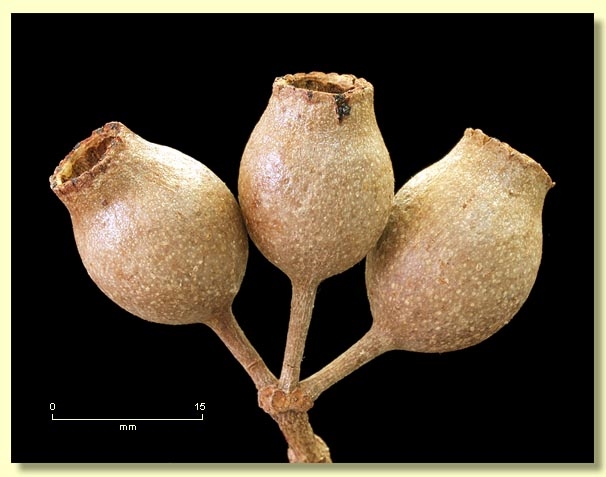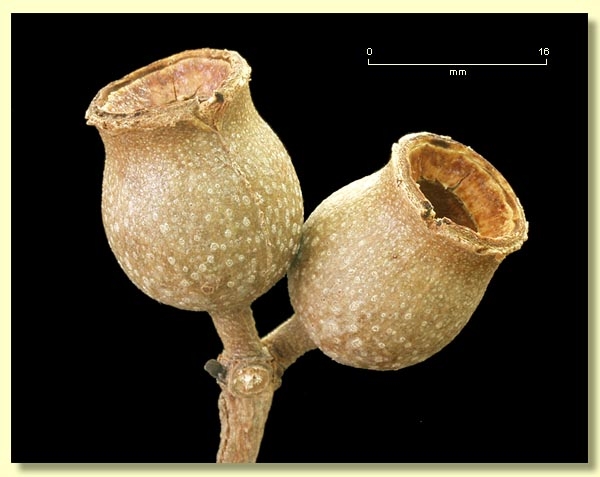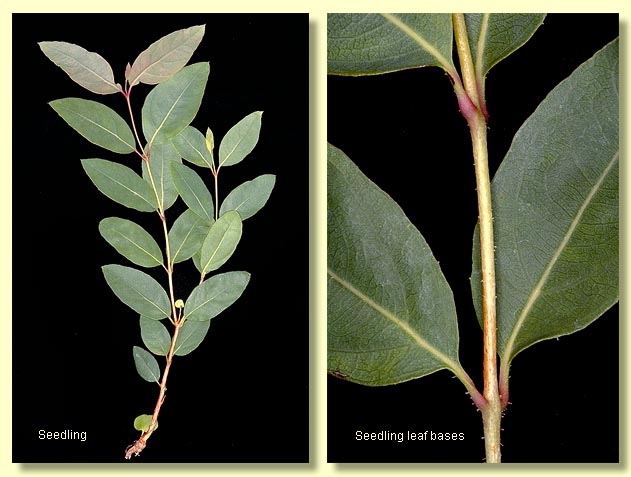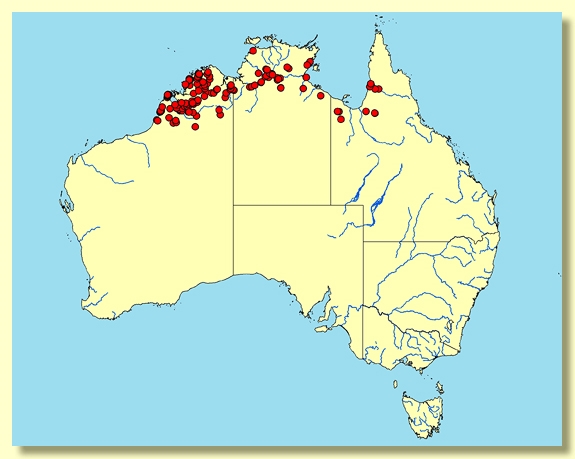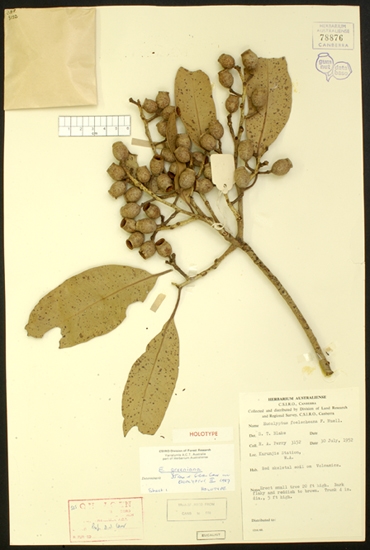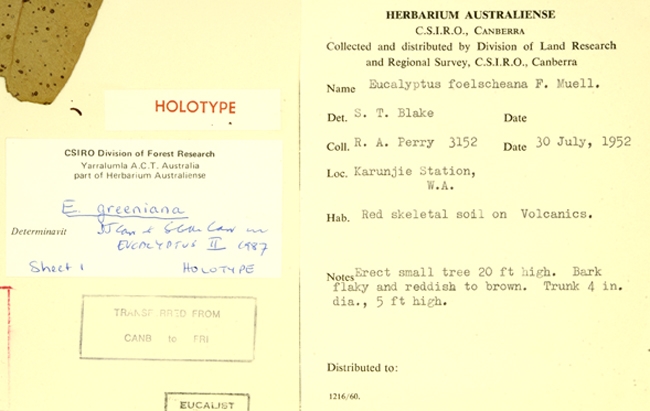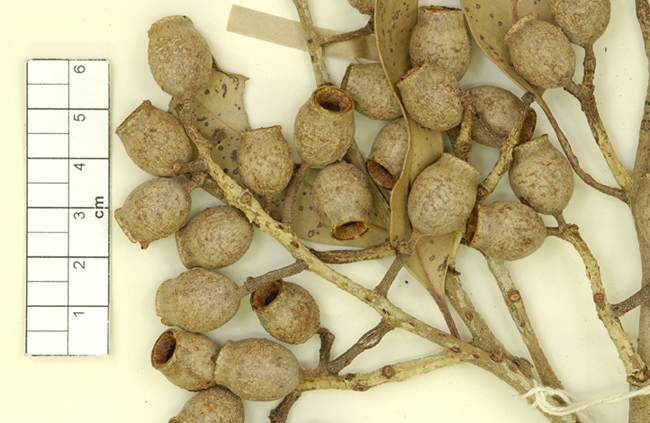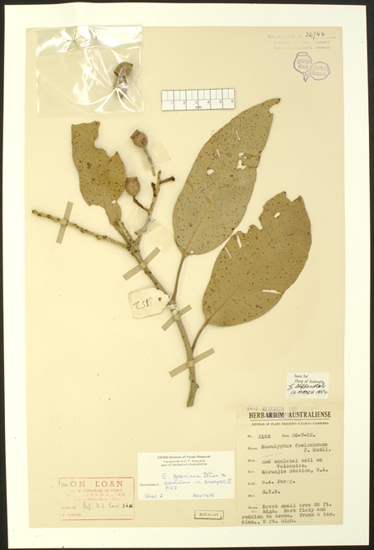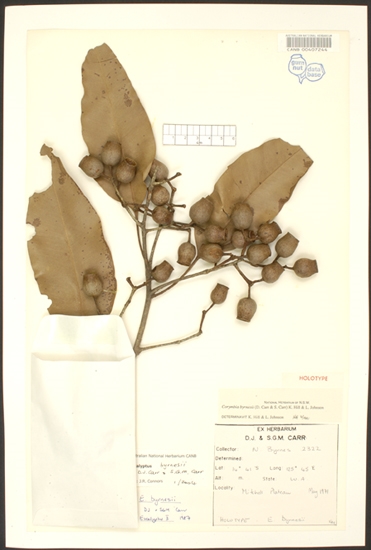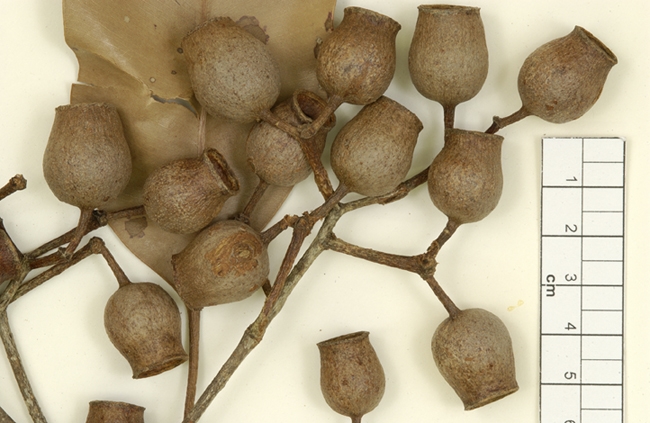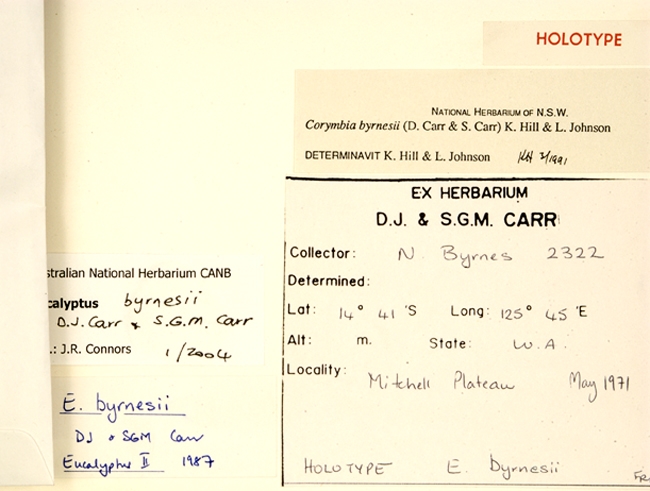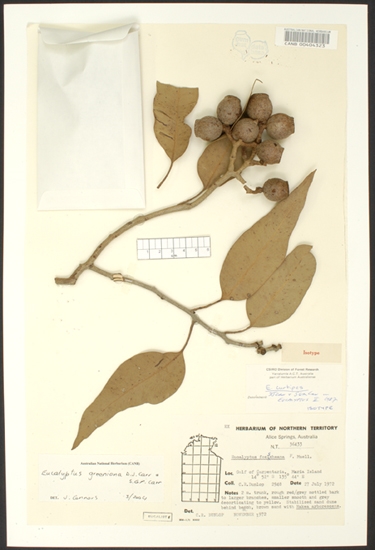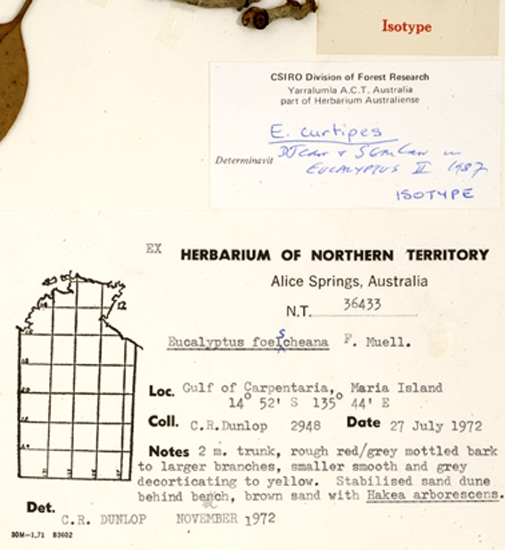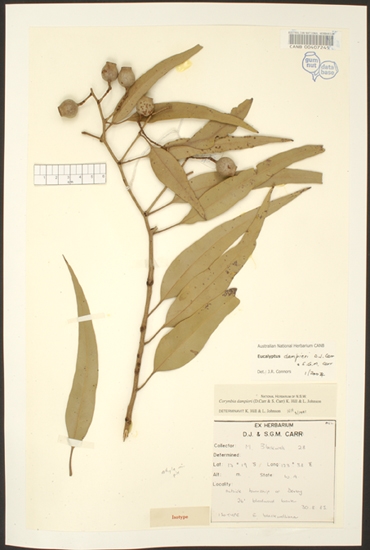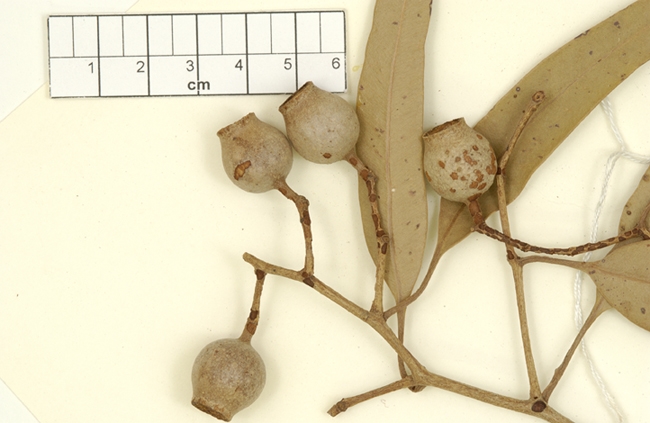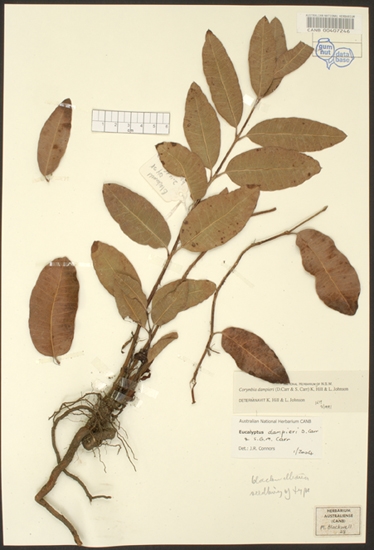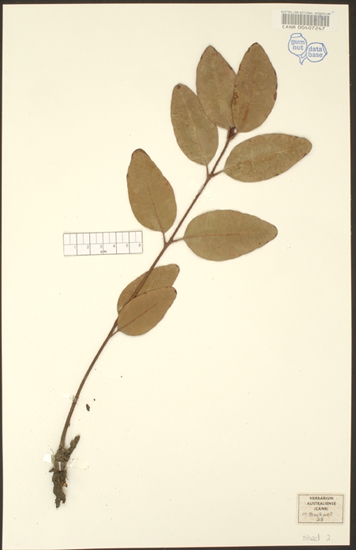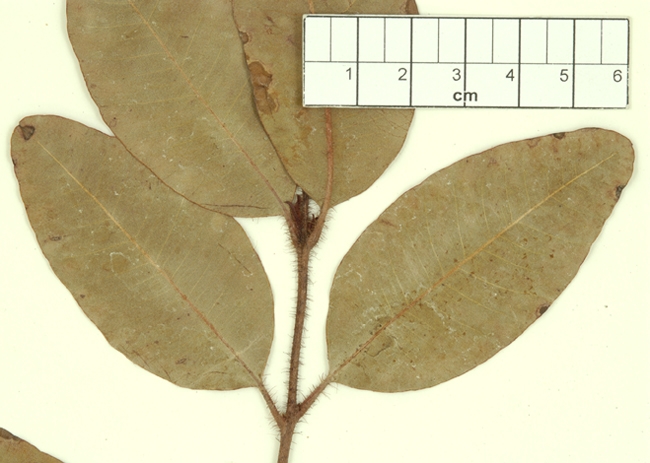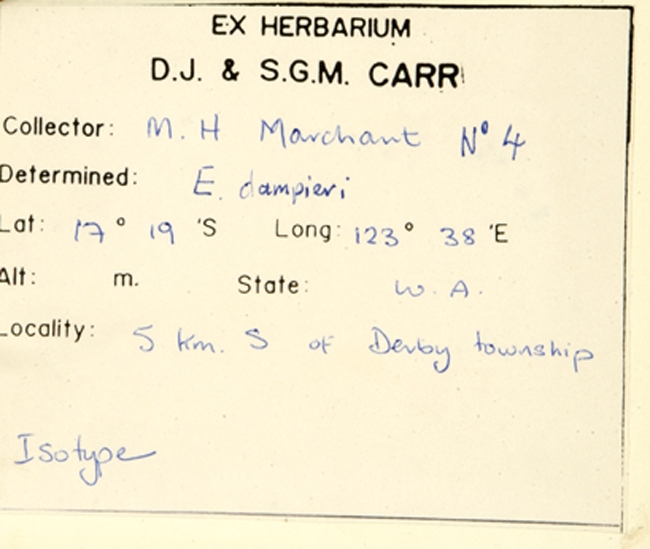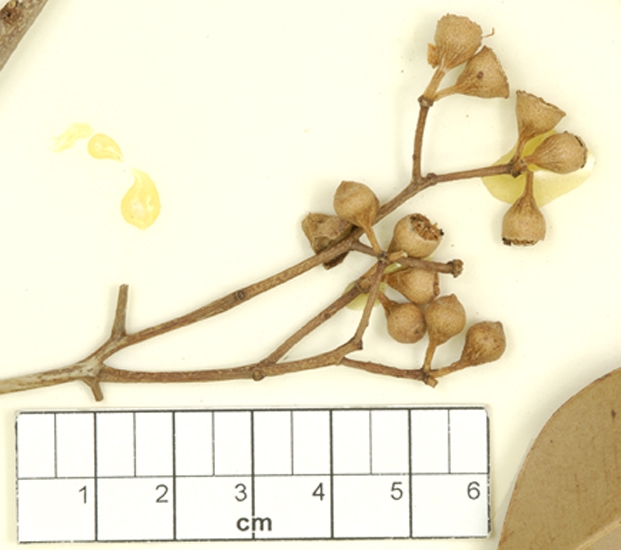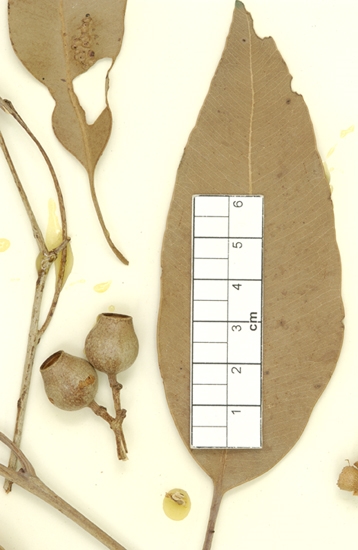Corymbia | Rufaria
Euclid - Online edition
Corymbia greeniana
Corymbia greeniana (D.J.Carr & S.G.M.Carr) K.D.Hill & L.A.S.Johnson, Telopea 6: 330 (1995).
Eucalyptus blackwelliana D.J.Carr & S.G.M.Carr, Eucalyptus 2: 162 (1987). T: Western Australia: just outside the township of Derby, 30 Aug 1985, M.Blackwell 28; holo: PERTH; iso: CANB, MEL.
[E. erythrophloia Blakely, Key Eucalypts: 80 (1934); in part, not as to type]
Tree to 10 m tall. Forming a lignotuber.
Bark rough, loose, tessellated, thin, grey-brown to reddish brown flakes, variably persistent on the trunk, often over the whole trunk and sometimes the larger limbs, rarely mainly gum-barked with imperfectly shed rough rusty flaky bark only at the base; smooth bark creamy white and pale grey.
Branchlets lack oil glands in the pith; smooth (glabrous).
Juvenile growth (coppice or field seedlings to 50 cm): stems rounded in cross-section, smooth (not scabrid or setose); juvenile leaves always petiolate, mostly alternate, large, orbicular to elliptical becoming broadly ovate or lanceolate, 10–26 cm long, 3.5–18 cm wide, base tapering or rounded or truncate, apex rounded and apiculate or pointed, dull, green, smooth (not scabrid or setose).
Adult leaves predominantly alternate, sometimes a few sub-opposite to opposite pairs present, petioles 1.1–5.6 cm long; blade broadly lanceolate to ovate, 8–23(27) cm long, (1.2)2–7.6 cm wide, often undulate, base usually tapering to petiole, margin entire, apex pointed, concolorous or very slightly discolorous, dull to moderately glossy, green, smooth, side-veins at greater than 45° to midrib (penniveined), reticulation very dense, intramarginal vein apparently absent (confluent with margin), oil glands apparently absent.
Inflorescence terminal compound, peduncles stout or relatively slender (very variable), rounded to angular, 0.4–2.8 cm long, buds 7(9) per umbel, pedicels 0.2–1.8 cm long. Mature buds obovoid to pyriform (0.8-1 cm long, 0.6-0.8 cm wide), smooth, scar absent (both opercula shed together at flowering), operculum shallowly rounded and apiculate, stamens inflexed, all fertile, anthers oblong, dorsifixed, versatile, dehiscing by longitudinal slits, style as long as or almost as long as floral cavity, straight, stigma blunt or papillose (mop like), locules 4, the vertical ovule rows indistinct on the placentae or ca 5 or 7. Flowers creamy white.
Fruit pedicellate (pedicels 0.2–1.4 cm long), urceolate with a short vertical neck that is flared or not flared at the rim, 1.3–2.8 cm long, 1.1–2.2 cm wide, smooth, disc descending vertically or sometimes obliquely when the rim is flared, valves 4, enclosed.
Seeds brown, 8–15 mm long, ellipsoidal with terminal wing, hilum ventral.
Cultivated seedlings (measured at ca node 10): cotyledons large, reniform; stems rounded in cross-section, setose with bristle-glands, may be sparsely so; leaves always petiolate, opposite for at least 12 nodes, elliptical to ovate-lanceolate, 3–12.7 cm long, 1.3–4 cm wide, base rounded to tapering, rarely oblique or truncate, margin entire or distantly subcrenulate, apex acute to broadly so or rounded, green, slightly discolorous, setose with bristle-glands sparsely distributed on petiole, margin and main veins on lower leaves but ± glabrous by node 11 or earlier.
Flowering has been recorded in January, February, March, April, May, August and October.
A medium-sized woodland tree widespread in monsoonal northern Australia, from the Kimberley region of Western Australia east through the Top End of the Northern Territory south from Katherine to Mataranka and east through the Roper River area to Doomadgee in Queensland and sporadically further east to the southern Cape York Peninsula between Normanton, Croydon and Kowanyama. May be locally abundant in drier savannah woodlands on plains and gentle slopes, on loamy to clayey soils or less commonly on sandy soils. Corymbia greeniana has scaly thin rough bark on at least part of the trunk, a crown of predominantly lanceolate dull to moderately glossy green leaves, medium-sized urn-shaped fruit (1.1–2.2 cm wide), and juvenile leaves that are ovate to broadly lanceolate. Buds are smooth and ± glossy.
Corymbia greeniana here includes C. byrnesii, C. curtipes, and C. dampieri, regarded as distinct species by Hill & Johnson (1995), but acknowledged by them to have overlapping morphological features and to show intergradation where their geographic ranges overlap. We find that clear morphological and geographic boundaries cannot be drawn between these entities, and regard a wide ranging variable species as being a more appropriate way to treat this.
Corymbia greeniana can be readily distinguished from the closely related C. latifolia, a species with smaller fruit (0.7–1.3 cm wide and frequently lacking a neck) and consistently dull adult leaves that are deltoid to broadly ovate. Both species prefer plain sites with loamy to clayey soils, with C. latifolia tending to be more on floodplains. Another species sometimes confused with C. greeniana is C. foelscheana, a Northern Territory endemic species with similar sized fruit, but with consistently dull adult leaves and very large ± orbicular juvenile leaves.
Within the natural range of C. greeniana there are other, more distantly related species of bloodwood that may be confusing. C. terminalis has thicker rough bark and larger buds that have a distinctly scurfy (rough) surface; C. dichromophloia, an essentially white smooth-barked tree with persistent flakes of reddish bark, small fruit < 1 cm diameter and setose juvenile leaves; and C. bleeseri, which has highly glossy adult leaves, smooth buds longer than wide and sparsely setose juvenile leaves.
MORE ABOUT CORYMBIA
MORE ABOUT RED BLOODWOODS
Corymbia greeniana: after Marjorie Free (née Green), formerly curator of the Forest Research Institute herbarium, Yarralumla, ACT.

